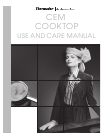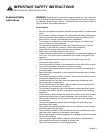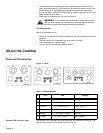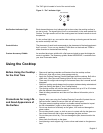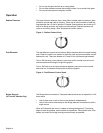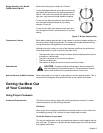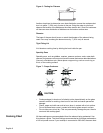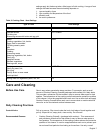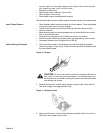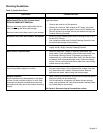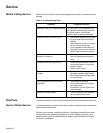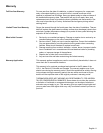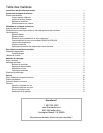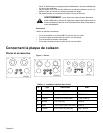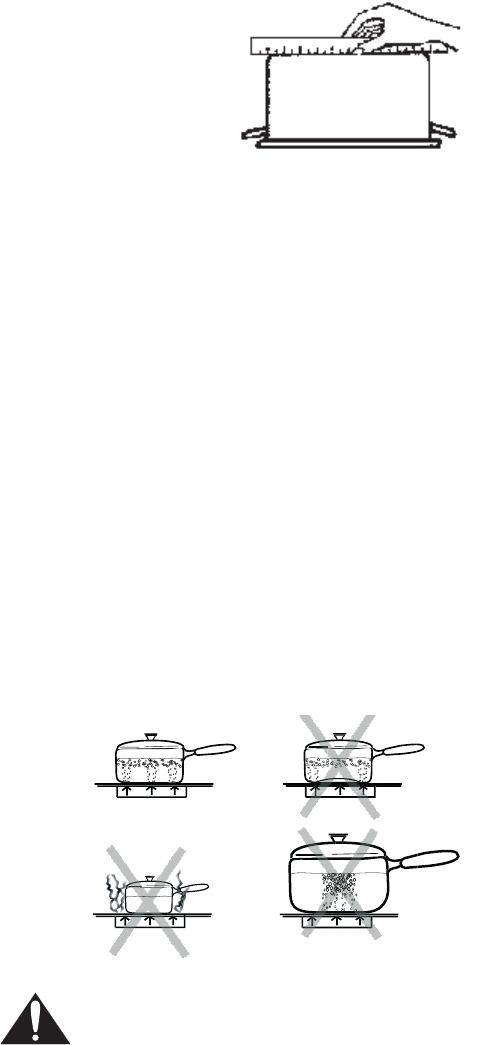
English 6
Figure 6 - Testing for Flatness
Another simple test to determine even heat distribution across the cookware bot-
tom is to place 1” (25.4 mm) of water in the pan. Bring the water to a boil and
observe the location of the bubbles as the water starts to boil. Good, flat cookware
will have an even distribution of bubbles over the bottom surface area.
Diameter
The base of the pan should cover or match the diameter of the element being
used. Pans may overhang the element area by 1” (25.4 mm) all around.
Tight Fitting Lid
A lid shortens cooking time by holding the heat inside the pan.
Specialty Pans
Specialty pans, such as griddles, roasters, pressure cookers, woks, water bath
canners and pressure canners must have the same features as described above.
(Use only a flat-bottom wok.) Never place a support ring, such as a wok ring or
trivet, on the cooking surface.
Figure 7 - Proper Cookware
CAUTION:
• Foods packaged in aluminum foil should not be placed directly on the glass
ceramic surface for cooking; aluminum foil can melt and cause permanent
damage.
• Plastic, paper and cloth can melt or burn when in contact with a hot surface.
Do not let these items come in contact with the hot glass ceramic surface.
• Do not allow pans to boil dry. This can permanently damage the pan, the ele-
ment and the cooktop glass.
Cooking Chart All these settings are recommended without the element being preheated. Use
this chart as a guide. The Heat Settings recommended on this page are based on
a 240 volt power source. If your cooktop is connected to 208 volts, the same heat



